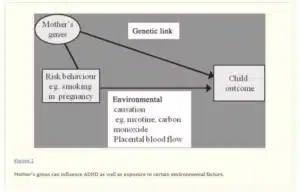In the study “Hyperbaric Oxygen in Chronic Traumatic Brain Injury: Oxygen, Pressure, and Gene Therapy,” researchers investigate the potential benefits of hyperbaric oxygen therapy (HBOT) for individuals with chronic traumatic brain injury (TBI). The study explores how the combination of increased oxygen levels, pressure, and gene therapy may aid in the recovery and management of long-term brain injury. This research aims to shed light on novel approaches to improving the quality of life and cognitive function for those living with chronic TBI.
Hyperbaric oxygen in chronic traumatic brain injury for wounds in any location and of any duration that has been misunderstood for 353 years. Since 2008 it has been applied to the persistent post-concussion syndrome of mild traumatic brain injury by civilian and later military researchers with apparent conflicting results. The civilian studies are positive and the military-funded studies are a mixture of misinterpreted positive data, indeterminate data, and negative data. This has confused the medical, academic, and lay communities. The source of the confusion is a fundamental misunderstanding of the definition, principles, and mechanisms of action of hyperbaric oxygen therapy. This article argues that the traditional definition of hyperbaric oxygen therapy is arbitrary.
The article establishes a scientific definition of hyperbaric oxygen therapy as a wound-healing therapy of combined increased atmospheric pressure and pressure of oxygen over ambient atmospheric pressure and pressure of oxygen whose main mechanisms of action are gene-mediated. Hyperbaric oxygen therapy exerts its wound-healing effects by expression and suppression of thousands of genes. The dominant gene actions are the upregulation of trophic and anti-inflammatory genes and down-regulation of pro-inflammatory and apoptotic genes. The combination of genes affected depends on the different combinations of total pressure and pressure of oxygen. Understanding that hyperbaric oxygen therapy is a pressure and oxygen dose-dependent gene therapy allows for reconciliation of the conflicting TBI study results as outcomes of different doses of pressure and oxygen.
Faqs
Q1: What is hyperbaric oxygen therapy (HBOT)?
A1: Hyperbaric oxygen therapy (HBOT) is a medical treatment that involves breathing pure oxygen in a pressurized chamber. It is commonly used to treat various medical conditions, and in this study, it is being explored for chronic traumatic brain injury.
Q2: What is chronic traumatic brain injury (TBI)?
A2: Chronic traumatic brain injury refers to long-term brain damage resulting from repeated or severe head injuries. It can lead to a range of cognitive and neurological issues that persist over time.
Q3: What was the purpose of the study “Hyperbaric Oxygen in Chronic Traumatic Brain Injury: Oxygen, Pressure, and Gene Therapy”?
A3: The study aimed to investigate the potential benefits of combining hyperbaric oxygen therapy (HBOT) with gene therapy in the treatment of chronic traumatic brain injury. It explored how this combination might improve outcomes for individuals with chronic TBI.
Q4: How does hyperbaric oxygen therapy work, and how can it benefit individuals with chronic TBI?
A4: HBOT delivers increased oxygen levels to the brain, which can promote healing and neuroplasticity. This may help in the recovery and management of cognitive and neurological deficits in individuals with chronic TBI.
Conclusion
In conclusion, the integration of hyperbaric oxygen therapy (HBOT) with gene therapy presents a multifaceted approach to addressing the complex challenges of chronic traumatic brain injury (TBI). HBOT’s oxygenation, pressure modulation, and potential synergies with gene therapy mechanisms offer a promising avenue for TBI treatment. The studies and research in this field provide valuable insights into the potential benefits of this combined approach. However, further extensive clinical trials and research are essential to establish its safety, long-term efficacy, and optimal protocols. The pursuit of innovative solutions for chronic TBI continues, and HBOT with gene therapy remains a compelling area of exploration.




